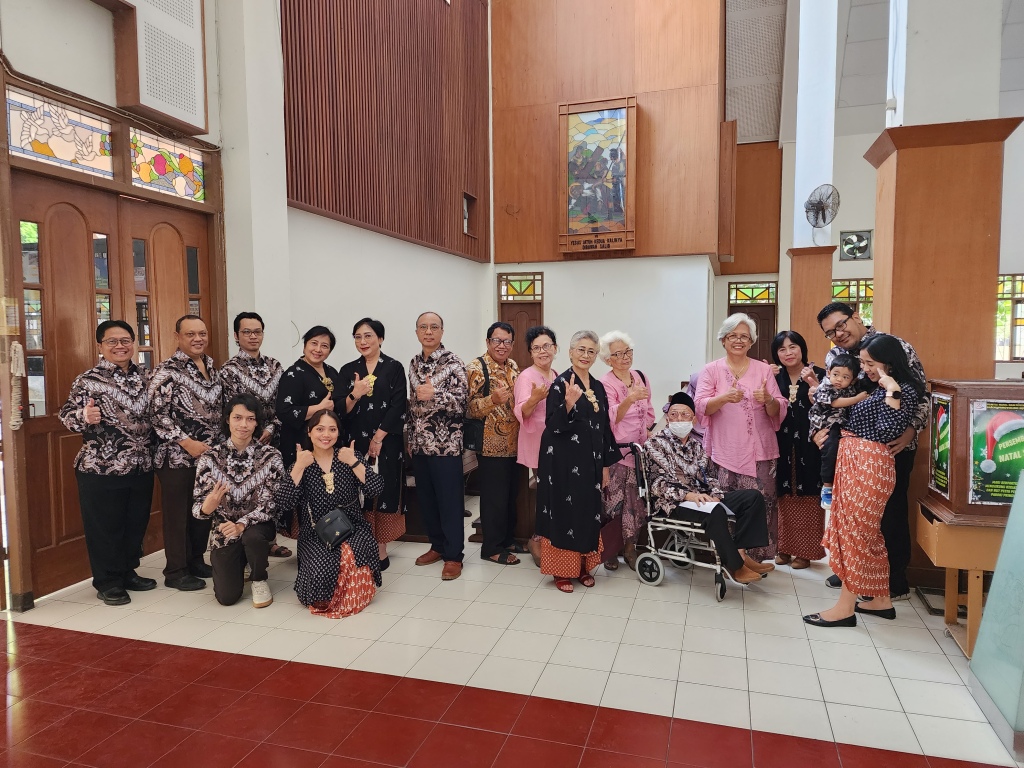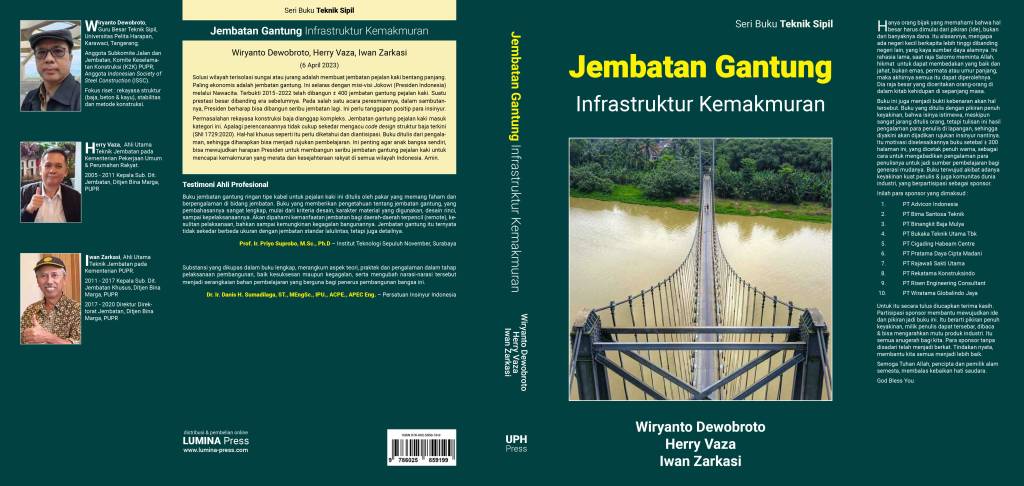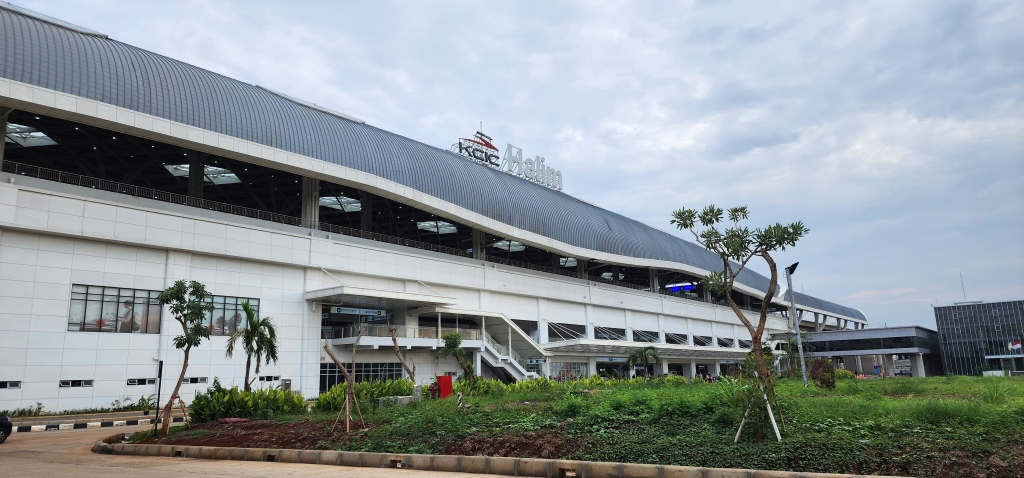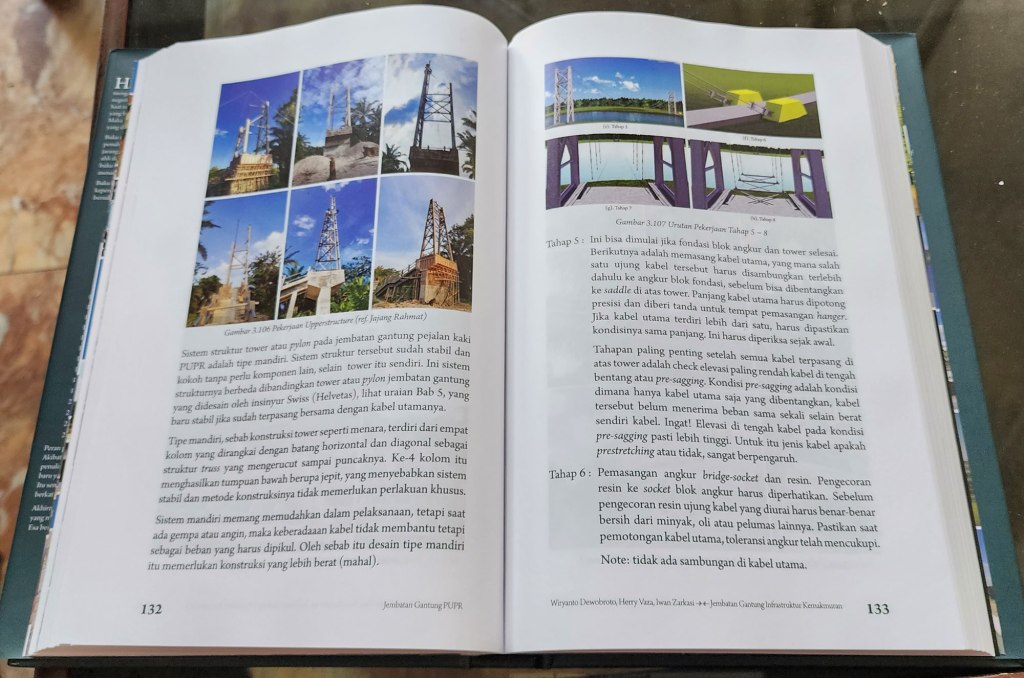Bertahun-tahun berkecipung pada bidang konstruksi tidak menjamin dapat menjadi engineer yang ‘baik’, siapa tahu hanya sekedar ‘tukang’ saja (meskipun gajinya jelas lebih gede dari pak tukang yang sebenarnya).
Lho koq begitu ? Apa bedanya tukang dengan engineer ?
Coba kita samakan dulu definisinya. Tukang adalah seseorang yang mampu mengerjakan sesuatu mengandalkan ketrampilan yang dimilikinya, yang diperoleh dari ketekunan yang konsisten dan terus menerus sehingga akhirnya dapat trampil dan cepat menyelesaikan pekerjaan tersebut. Kadang-kadang ada unsur bakat juga untuk itu. Untuk menjadi tukang tidak perlu pendidikan khusus, yang penting mempunyai, tenaga, kemauan dan waktu yang cukup. Untuk menjadi tukang perlu magang pada tukang yang lebih senior. Mula-mula meniru dengan membantu tukang yang senior, mendapat koreksi-koreksi yang diperlukan dari tukang senior sampai akhirnya dilepas, dapat mandiri dan tidak perlu pengawasan lagi untuk mendapatkan hasil yang dianggap ‘cukup’ oleh tukang senior atau pemberi tugas kepada tukang tersebut. Akhirnya “jadilah” tukang yang dimaksud.
Lalu bagaimana dengan engineer? Mirip, hanya untuk itu perlu pendidikan khusus, bahkan perlu gelar. Selain itu, karena sekarang lembaga pendidikan (perguruan tinggi) semakin banyak dan kualitasnya beragam maka akan ditambah filter khusus yang lain, yaitu Sertifikasi.
Karena dibekali pendidikan khusus maka engineer harus dapat berbeda dengan tukang. Dalam menghadapi setiap masalah harus dapat melihat ke akar permasalahan, dapat menyiapkan strategi yang paling tepat ditinjau dari sisi ilmunya. Jadi meskipun belum pernah menghadapi kasus yang sama maka engineer yang baik harus dapat menyakinkan bahwa solusi yang diberikan tepat. Bahkan bisa mendeteksi sesuatu yang mungkin dapat berpotensi menjadi masalah dikemudian hari dan dapat mencegahnya.
Oleh karena itulah, kemauan untuk belajar terus menerus adalah wajib hukumnya bagi engineer yang baik.
Untuk itulah pada kesempatan ini, saya akan menyumbangkan satu bacaan wajib bagi engineer yang bergerak pada perencanaan dan pelaksanaan konstruksi bangunan. Bacaan wajib yang dimaksud adalah
I n t e r n a t i o n a l B u i l d i n g C o d e 2 0 0 3 .
Materinya sangat lengkap, keseluruhan kalau dikumpulkan bisa mencapai 35 mb , banyak sekali. Jadi untuk itulah sengaja saya pecah agar anda dapat men down-load sesuai kebutuhan.
Jika anda mendapatkan kemudahan dengan bacaan tadi maka berterima-kasihlah pada sdr. Donny B. Tampubolon yang berkenan memberikan pada blog ini. GBU Donny.
catatan : in up-load-nya akan bertahap, jangan kaget, quota speedy saya over. Juga jika anda melihat judul dan isi mungkin tidak terlalu ‘pas’, mohon dimaklumi , memang disengaja.
Title (down-load PDF 337 kb)
Table of Content (down-load PDF 221 kb)
Chapter 1: Administration (down-load PDF 123 kb)
Section
|
101
102
103
104
105
106
107
108
109
110
111
112
113
114
115 |
General
Applicability
Department of Building Safety
Duties and Powers of Building Official
Permits
Construction Documents
Temporary Structures and Uses
Fees
Inspections
Certificate of Occupancy
Service Utilities
Board of Appeals
Violations
Stop Work Order
Unsafe Structures and Equipment |
1
1
2
2
3
5
6
6
7
7
8
8
8
8
9 |
Chapter 2: Definitions (down-load PDF 215 kb)
Section
|
201
202 |
General
Definitions |
11
11 |
Chapter 3: Use and Occupancy Classification (down-load PDF 238 kb)
Section
|
301
302
303
304
305
306
307
308
309
310
311
312 |
General
Classification
Assembly Group A
Business Group B
Educational Group E
Factory Group F
High-Hazard Group H
Institutional Group I
Mercantile Group M
Residential Group R
Storage Group S
Utility and Miscellaneous Group U |
23
23
24
26
26
26
27
34
36
36
36
37 |
Chapter 4: Special Detailed Requirements Based on Use and Occupancy (down-load PDF 339 kb)
Section
|
401
402
403
404
405
406
407
408
409
410
411
412
413
414
415
416
417
418 |
Scope
Covered Mall Buildings
High-Rise Buildings
Atriums
Underground Buildings
Motor-Vehicle-Related Occupancies
Group I-2
Group I-3
Motion Picture Projection Rooms
Stages and Platforms
Special Amusement Buildings
Aircraft-Related Occupancies
Combustible Storage
Hazardous Materials
Groups H-1, H-2, H-3, H-4 and H-5
Application of Flammable Finishes
Drying Rooms
Organic Coatings |
39
39
41
43
43
44
48
49
50
51
53
54
55
56
59
71
72
72 |
Chapter 5: General Building Heights and Areas (down-load PDF 215 kb)
Section
|
501
502
503
504
505
506
507
508 |
General
Definitions
General Height and Area Limitations
Height Modifications
Mezzanines
Area Modifications
Unlimited Area Buildings
Special Provisions |
73
73
73
75
75
76
76
77 |
Chapter 6: Types of Construction (down-load PDF 198 kb)
Section
|
601
602
603 |
General
Construction Classification
Combustible Material in Types I and II Construction |
81
81
82 |
Chapter 7: Fire-Resistance-Rated Construction (down-load PDF 730 kb)
Section
|
701
702
703
704
705
706
707
708
709
710
711
712
713
714
715
716
717
718
719
720
721 |
General
Definitions
Fire-Resistance Ratings and Fire Tests
Exterior Walls
Fire Walls
Fire Barriers
Shaft Enclosures
Fire Partitions
Smoke Barriers
Smoke Partitions
Horizontal Assemblies
Penetrations
Fire-resistant Joint Systems
Fire-resistance Rating of Structural Members
Opening Protectives
Ducts and Air Transfer Openings
Concealed Spaces
Fire-resistance Requirements for Plaster
Thermal- and Sound-Insulating Materials
Prescriptive Fire Resistance
Calculated Fire Resistance |
85
85
86
87
90
92
93
95
96
96
96
97
99
99
100
103
107
108
109
109
110 |
Chapter 8: Interior Finishes (down-load PDF 34 kb)
Section
|
801
802
803
804
805 |
General
Definitions
Wall and Ceiling Finishes
Interior Floor Finish
Decorations and Trim |
157
157
157
160
160 |
Chapter 9: Fire Protection Systems (down-load PDF 232 kb)
Section
|
901
902
903
904
905
906
907
908
909
910
911 |
General
Definitions
Automatic Sprinkler Systems
Alternative Automatic Fire-Extinguishing Systems
Standpipe Systems
Portable Fire Extinguishers
Fire Alarm and Detection Systems
Emergency Alarm Systems
Smoke Control Systems
Smoke and Heat Vents
Fire Command Center |
163
163
166
170
171
173
173
180
181
189
191 |
Chapter 10: Means of Egress (down-load PDF 241 kb)
Section
|
1001
1002
1003
1004
1005
1006
1007
1008
1009
1010
1011
1012
1013
1014
1015
1016
1017
1018
1019
1020
1021
1022
1023
1024
1025 |
Administration
Definitions
General Means of Egress
Occupant Load
Egress Width
Means of Egress Illumination
Accessible Means of Egress
Doors, Gates and Turnstiles
Stairways and Handrails
Ramps
Exit Signs
Guards
Exit Access
Exit and Exit Access Doorways
Exit Access Travel Distance
Corridors
Exits
Number of Exits and Continuity
Vertical Exit Enclosures
Exit Passageways
Horizontal Exits
Exterior Exit Ramps and Stairways
Exit Discharge
Assembly
Emergency Escape and Rescue |
193
193
194
195
196
197
197
199
204
206
207
208
209
210
211
212
213
213
214
216
216
217
217
219
223 |
Chapter 11: Accessibility (down-load PDF 225 kb)
Section
|
1101
1102
1103
1104
1105
1106
1107
1108
1109
1110 |
General
Definitions
Scoping Requirements
Accessible Route
Accessible Entrances
Parking and Passenger Loading Facilities
Dwelling Units and Sleeping Units
Special Occupancies
Other Features and Facilities
Signage |
225
225
225
226
227
228
228
231
233
236 |
Chapter 12: Interior Environment (down-load PDF 257 kb)
Section
|
1201
1202
1203
1204
1205
1206
1207
1208
1209
1210 |
General
Definitions
Ventilation
Temperature Control
Lighting
Yards or Courts
Sound Transmission
Interior Space Dimensions.
Access to Unoccupied Spaces
Surrounding Materials |
239
239
239
240
240
241
241
241
242
242 |
Chapter 13: Energy Efficiency (down-load PDF 164 kb)
Section
Chapter 14: Exterior Walls (down-load PDF 205 kb)
Section
|
1401
1402
1403
1404
1405
1406
1407 |
General
Definitions
Performance Requirements
Materials
Installation of Wall Coverings
Combustible Materials on the Exterior Side of Exterior Walls
Metal Composite Materials (MCM) |
245
245
245
246
246
250
251 |
Chapter 15: Roof Assemblies and Rooftop Structures Section
(down-load PDF 164 kb)
Section
|
1501
1502
1503
1504
1505
1506
1507
1508
1509
1510 |
General
Definitions
Weather Protection
Performance Requirements
Fire Classification
Materials
Requirements for Roof Coverings
Roof Insulation
Rooftop Structures
Reroofing |
253
253
253
254
254
255
255
264
264
265 |
Chapter 16: Structural Design (down-load PDF 2,439 kb – map not include)
Section
|
1601
1602
1603
1604
1605
1606
1607
1608
1609
1610
1611
1612
1613
1614
1615
1616
1617
1618
1619
1620
1621
1622
1623 |
General
Definitions
Construction Documents
General Design Requirements
Load Combinations
Dead Loads
Live Loads
Snow Loads
Wind Loads
Soil Lateral Load
Rain Loads
Flood Loads
Earthquake Loads Definitions
Earthquake Loads General
Earthquake Loads Site Ground Motion
Eq Loads Criteria Selection
Eq Loads Minimum Design Lateral Force and Related Effects
Dynamic Analysis Procedure for the Seismic Design of Building
Earthquake Loads Soil-Structure Interaction Effects
Earthquake Loads Design, Detailing Requirements
Architectural, ME Component Seismic Design Requirements
Nonbuilding Structures Seismic Design Requirements
Seismically Isolated Structures |
267
267
269
270
273
274
274
279
283
298
298
299
301
302
303
325
329
338
338
338
342
342
343 |
Part of Chapter 16 : map page 304 (down-load PDF 969 kb)
Part of Chapter 16 : map page 305 (down-load PDF 1,783 kb)
Part of Chapter 16 : map page 306 (down-load PDF 925 kb)
Part of Chapter 16 : map page 307 (down-load PDF 1,764 kb)
Part of Chapter 16 : map page 308 (down-load PDF 946 kb)
Part of Chapter 16 : map page 309 (down-load PDF 1,431 kb)
Part of Chapter 16 : map page 310 (down-load PDF 909 kb)
Part of Chapter 16 : map page 311 (down-load PDF 1,435 kb)
Part of Chapter 16 : map page 312 (down-load PDF 182 kb)
Part of Chapter 16 : map page 313 (down-load PDF 197 kb)
Part of Chapter 16 : map page 314 (down-load PDF 163 kb)
Part of Chapter 16 : map page 315 (down-load PDF 173 kb)
Part of Chapter 16 : map page 316 (down-load PDF 1,796 kb)
Part of Chapter 16 : map page 317 (down-load PDF 1,796 kb)
Part of Chapter 16 : map page 318 (down-load PDF 2,512 kb)
Part of Chapter 16 : map page 319 (down-load PDF 2,516 kb)
Part of Chapter 16 : map page 320 (down-load PDF 2,381 kb)
Part of Chapter 16 : map page 321 (down-load PDF 1,588 kb)
Chapter 17: Structural Tests and Special Inspections (down-load PDF 262 kb)
Section
|
1701
1702
1703
1704
1705
1706
1707
1708
1709
1710
1711
1712
1713
1714
1715 |
General
Definitions
Approvals
Special Inspections
Quality Assurance for Seismic Resistance
Quality Assurance for Wind Requirements
Special Inspections for Seismic Resistance
Structural Testing for Seismic Resistance
Structural Observations
Design Strengths of Materials
Test Safe Load
In-Situ Load Tests
Preconstruction Load Tests
Material and Test
Standards |
345
345
345
346
353
354
355
356
357
357
357
357
358
358
359 |
Chapter 18: Soils and Foundations (down-load PDF 314 kb)
Section
|
1801
1802
1803
1804
1805
1806
1807
1808
1809
1810
1811
1812 |
General
Foundation and Soils Investigations
Excavation, Grading and Fill
Allowable Load-Bearing Values of Soils
Footings and Foundations
Retaining Walls
Dampproofing and Waterproofing
Pier and Pile Foundations
Driven Pile Foundations
Cast-in-Place Concrete Pile Foundations
Composite Piles
Pier Foundations |
361
361
362
363
364
372
372
373
378
381
384
385 |
Chapter 19: Concrete (down-load PDF 286 kb)
Section
|
1901
1902
1903
1904
1905
1906
1907
1908
1909
1910
1911
1912
1913
1914
1915
1916 |
General
Definitions
Specifications for Tests and Materials
Durability Requirements
Concrete Quality, Mixing and Placing
Formwork, Embedded Pipes and Construction Joints
Details of Reinforcement
Modifications to ACI 318
Structural Plain Concrete
Seismic Design Provisions
Minimum Slab Provisions
Anchorage to Concrete Allowable Stress Design
Anchorage to Concrete Strength Design
Shotcrete
Reinforced Gypsum Concrete
Concrete-Filled Pipe Columns |
387
387
388
389
392
394
395
397
398
399
400
400
401
401
402
403 |
Chapter 20: Aluminum (down-load PDF 145 kb)
Section
|
2001
2002 |
General
Materials |
405
405 |
Chapter 21: Masonry (down-load PDF 610 kb)
Section
|
2101
2102
2103
2104
2105
2106
2107
2108
2109
2110
2111
2112
2113 |
General
Definitions and Notations
Masonry Construction Materials
Construction
Quality Assurance
Seismic Design
Working Stress Design
Strength Design of Masonry
Empirical Design of Masonry
Glass Unit Masonry
Masonry Fireplaces
Masonry Heaters
Masonry Chimneys |
407
407
410
414
416
417
418
419
419
425
427
431
431 |
Chapter 22: Steel (down-load PDF 232 kb)
Section
|
2201
2202
2203
2204
2205
2206
2207
2208
2209
2210
2211 |
General
Definitions and Nomenclature
Identification and Protection of Steel for Structure Purposes
Connections
Structural Steel
Steel Joists
Steel Cable Structures
Steel Storage Racks
Cold-Formed Steel
Cold-Formed Steel Light Framed Construction
Cold-Formed Steel Light-Framed Shear Walls |
437
437
437
437
439
439
439
439
439
440
440 |
Chapter 23: Wood (down-load PDF 571 kb)
Section
|
2301
2302
2303
2304
2305
2306
2307
2308 |
General
Definitions
Minimum Standards and Quality
General Construction Requirements
General Design Requirement for Lateral-Force-Resisting
Allowable Stress Design
Load and Resistance Factor Design
Conventional Light-Frame Construction |
445
445
446
449
457
463
470
472 |
Chapter 24: Glass and Glazing (down-load PDF 3,528 kb)
Section
|
2401
2402
2403
2404
2405
2406
2407
2408
2409 |
General
Definitions
General Requirements for Glass
Wind, Snow, Seismic and Dead Loads on Glass
Sloped Glazing and Skylights
Safety Glazing
Glass in Handrails and Guards
Glazing in Athletic Facilities
Glass in Floors and Sidewalks |
515
515
515
515
523
524
526
526
526 |
Chapter 25: Gypsum Board and Plaster (down-load PDF 175 kb)
Section
|
2501
2502
2503
2504
2505
2506
2507
2508
2509
2510
2511
2512
2513 |
General
Definitions
Inspection
Vertical and Horizontal Assemblies
Shear Wall Construction
Gypsum Board Materials
Lathing and Plastering
Gypsum Construction
Gypsum Board in Showers and Water Closets
Lathing and Furring for Cement Plaster (Stucco)
Interior Plaster
Exterior Plaster
Exposed Aggregate Plaster |
529
529
529
529
529
530
530
530
531
532
532
533
533 |
Chapter 26: Plastic (down-load PDF 201 kb)
Section
|
2601
2602
2603
2604
2605
2606
2607
2608
2609
2610
2611 |
General
Definitions
Foam Plastic Insulation
Interior Finish and Trim
Plastic Veneer
Light-Transmitting Plastics
Light-Transmitting Plastic Wall Panels
Light-Transmitting Plastic Glazing
Light-Transmitting Plastic Roof Panels
Light-Transmitting Plastic Skylight Glazing
Light-Transmitting Plastic Interior Signs |
535
535
535
538
538
538
539
540
540
541
542 |
Chapter 27: Electrical (down-load PDF 169 kb)
Section
|
2701
2702 |
General
Emergency and Standby Power Systems |
543
543 |
Chapter 28: Mechanical Systems (down-load PDF 164 kb)
Section
Chapter 29: Plumbing Systems (down-load PDF 179 kb)
Section
|
2901
2902 |
General
Minimum Plumbing Facilities |
547
547 |
Chapter 30: Elevators and Conveying Systems (down-load PDF 177 kb)
Section
|
3001
3002
3003
3004
3005
3006 |
General
Hoistway Enclosures
Emergency Operations
Hoistway Venting
Conveying Systems
Machine Rooms |
551
551
551
552
552
553 |
Chapter 31: Special Construction (down-load PDF 191 kb)
Section
|
3101
3102
3103
3104
3105
3106
3107
3108
3109 |
General
Membrane Structures
Temporary Structures
Pedestrian Walkways and Tunnels
Awnings and Canopies
Marquees
Signs
Radio and Television Towers
Swimming Pool Enclosures and Safety Devices |
555
555
556
556
557
558
558
558
558 |
Chapter 32: Encroachments Into The Public Right-of-Way (down-load PDF 57kb)
Section
|
3201
3202 |
General
Encroachments |
561
561 |
Chapter 33: Safeguards During Construction (down-load PDF 90 kb)
Section
|
3301
3302
3303
3304
3305
3306
3307
3308
3309
3310
3311
3312 |
General
Construction Safeguards
Demolition
Site Work
Sanitary
Protection of Pedestrians
Protection of Adjoining Property
Temporary Use of Streets, Alleys and Public Property
Fire Extinguishers
Exits
Standpipes
Automatic Sprinkler System |
563
563
563
563
563
563
565
565
565
565
565
566 |
Chapter 34: Existing Structures (down-load PDF 156 kb)
Section
|
3401
3402
3403
3404
3405
3406
3407
3408
3409
3410 |
General
Definitions
Additions, Alterations or Repairs
Fire Escapes
Glass Replacement
Change of Occupancy
Historic Buildings
Moved Structures
Accessibility for Existing Buildings
Compliance Alternatives |
567
567
567
567
568
568
568
568
568
570 |
Chapter 35: Referenced Standards (down-load PDF 108 kb)
Appendix A: Employee Qualifications (down-load PDF 171 kb)
Section
|
A101
A102 |
Building Official Qualifications
Referenced Standards |
597
597 |
Appendix B: Board of Appeals (down-load PDF 154 kb)
Section
Appendix C: Group U -Agricultural Buildings (down-load PDF 154 kb)
Section
|
C101
C102
C103
C104 |
General
Allowable Height and Area
Mixed Occupancies
Exits |
601
601
601
601 |
Appendix D: Fire Districts (down-load PDF 162 kb)
Section
|
D101
D102
D103
D104
D105
D106 |
General
Building Restrictions
Changes to Buildings
Buildings Located Partially in the Fire District
Exceptions to Restrictions in Fire District
Referenced Standards |
603
603
604
604
604
605 |
Appendix E: Supplementary Accessibility Requirements (down-load PDF 178 kb)
Section
|
E101
E102
E103
E104
E105
E106
E107
E108
E109
E110
E111
E112 |
General
Definitions
Accessible Route
Special Occupancies
Other Features and Facilities
Telephones
Signage
Bus Stops
Transportation Facilities and Stations
Airports
Qualified Historic Buildings and Facilities
Referenced Standards |
607
607
607
607
608
608
609
610
610
611
611
612 |
Appendix F: Rodent Proofing (down-load PDF 155 kb)
Section
Appendix G: Flood-Resistant Construction (down-load PDF 193 kb)
Section
|
G101
G102
G103
G104
G105
G201
G301
G401
G501
G601
G701
G702 |
Administration
Applicability
Powers and Duties
Permits
Variances
Definitions
Subdivisions
Site Improvement
Manufactured Homes
Recreational Vehicles
Tanks
Referenced Standards |
615
615
615
616
616
617
618
618
618
618
618
619 |
Appendix H: Signs (down-load PDF 190 kb)
Section
|
H101 H102
H103
H104
H105
H106
H107
H108
H109
H110
H111
H112
H113
H114
H115 |
General Definitions Location Identification
Design and Construction Electrical
Combustible Materials
Animated Devices
Ground Signs
Roof Signs
Wall Signs
Projecting Signs
Marquee Signs
Portable Signs
Referenced Standards |
621
621
621
621
621
622
622
622
622
623
623
623
624
624
624 |
Appendix I: Patio Covers (down-load PDF 152 kb)
Section
|
I101
I102
I103
I104 |
General
Definitions
Exterior Openings
Structural Provisions |
625
625
625
625 |
Appendix J: Grading (down-load PDF 199 kb)
Section
|
J101
J102
J103
J104
J105
J106
J107
J108
J109
J110
J111 |
General
Definitions
Permits Required
Permit Application and Submittals
Inspections
Excavations
Fills
Setbacks
Drainage and Terracing
Erosion Control
Referenced Standards |
627
627
627
627
628
628
628
629
629
630
630 |
(down-load PDF 479 kb)







Tinggalkan komentar